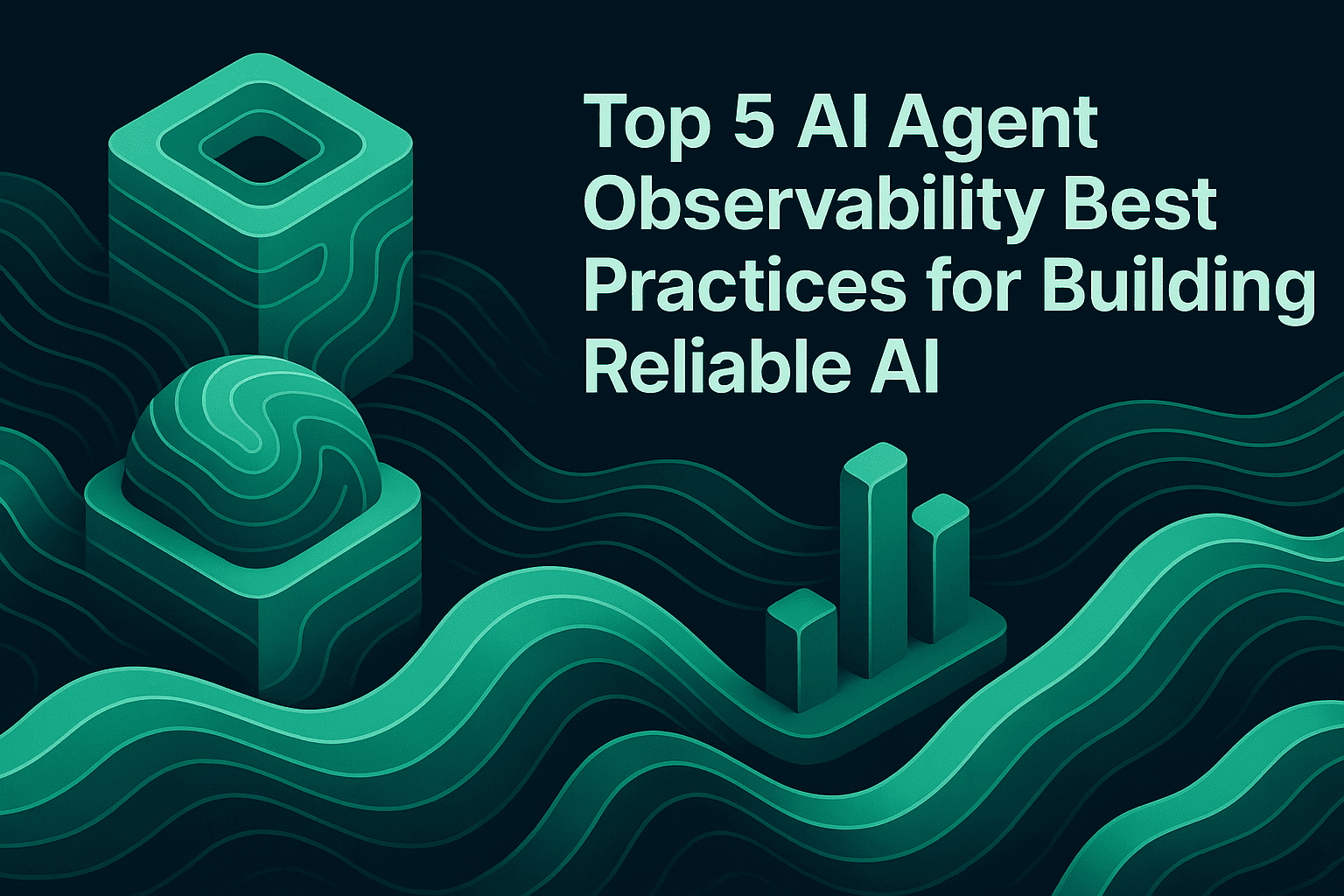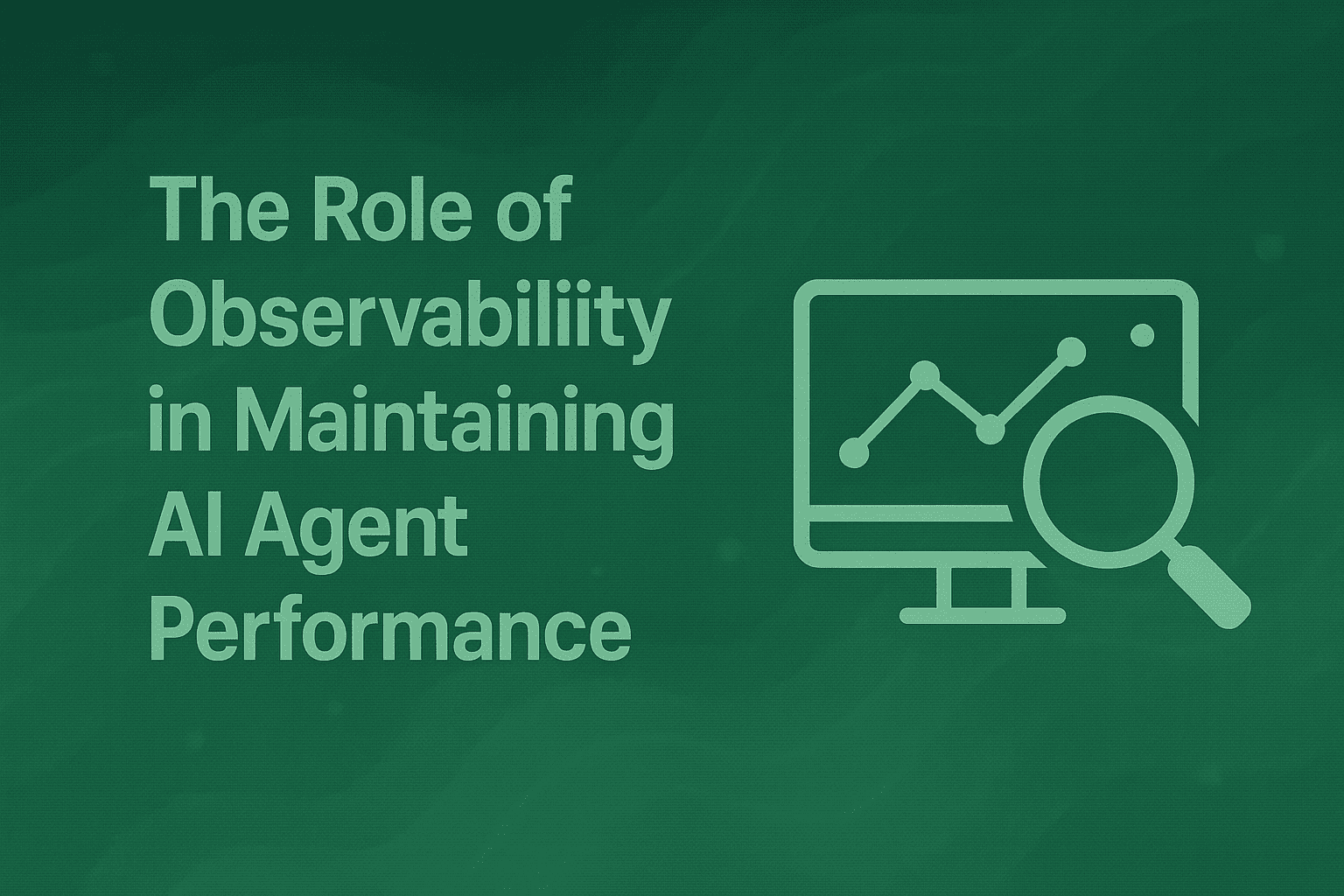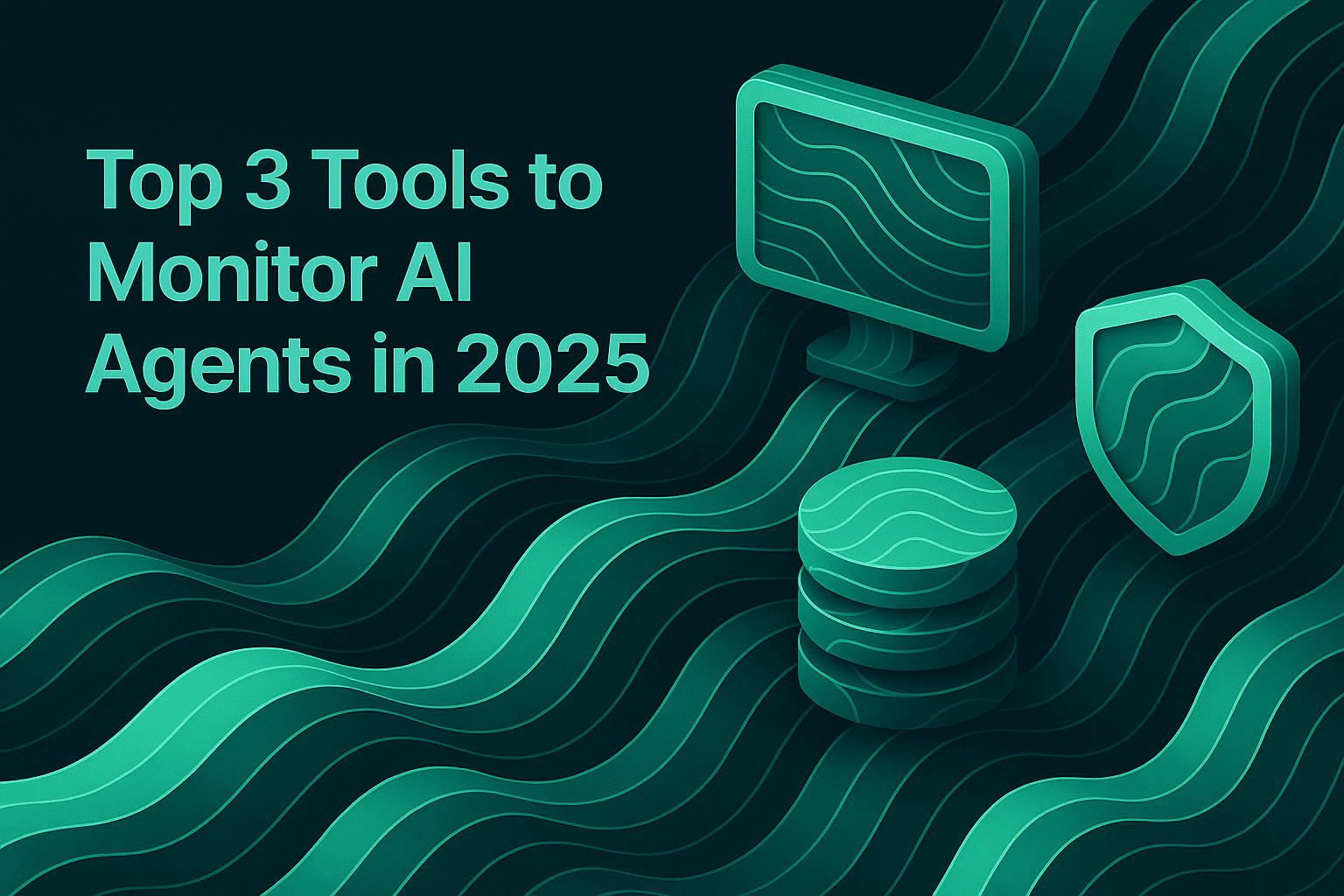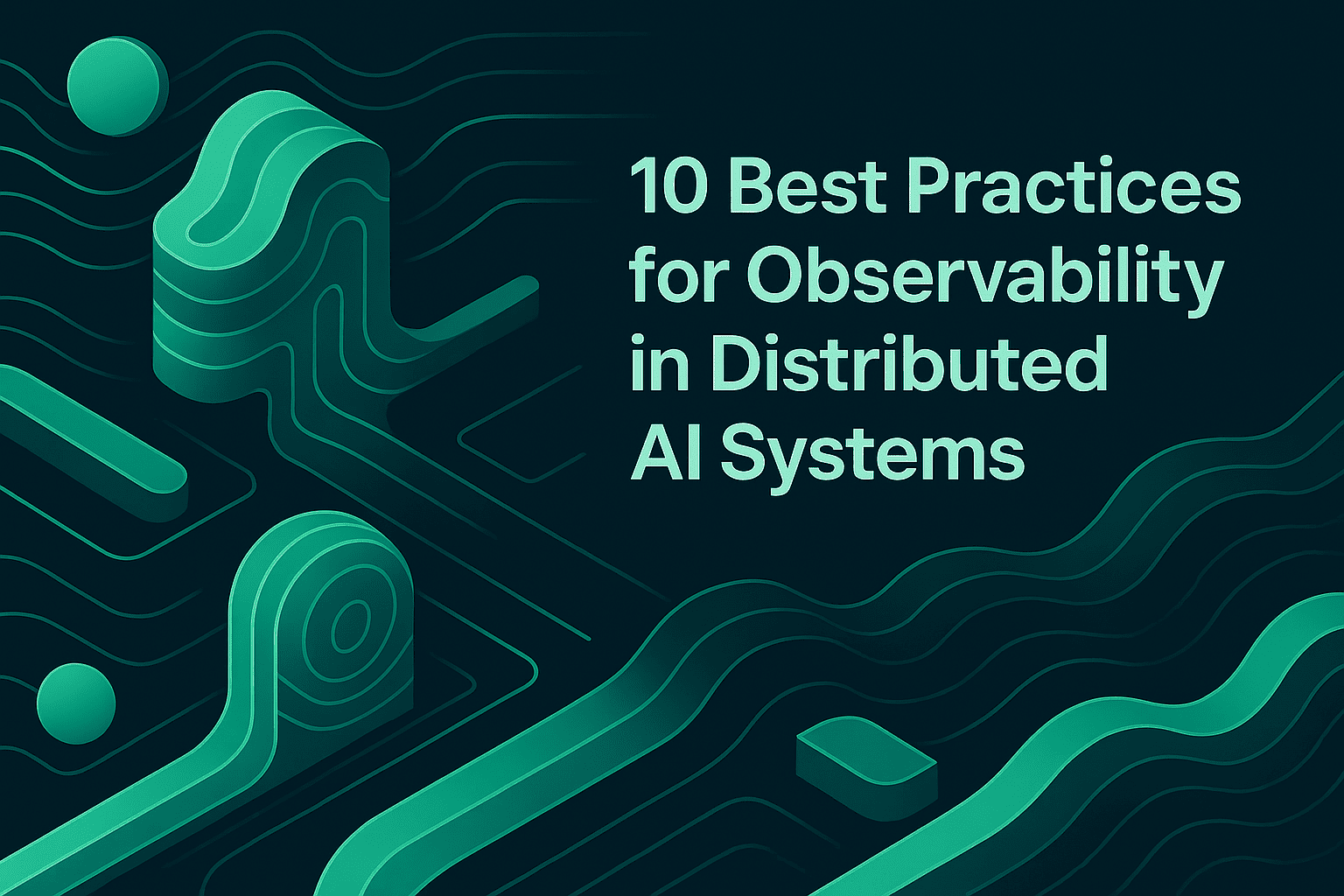Top 5 AI Agent Observability Best Practices for Building Reliable AI

TL;DR
AI agent observability is essential for building reliable, production-ready AI systems. This guide covers five critical best practices: implementing comprehensive distributed tracing, establishing continuous evaluation frameworks, deploying real-time monitoring with automated alerts, enforcing governance through standardized logging, and integrating human-in-the-loop validation. These practices address the non-deterministic nature of AI agents and ensure transparency, safety, and reliability across the entire AI lifecycle. Organizations using platforms like Maxim AI achieve faster debugging, improved quality, and trustworthy AI deployments.
Understanding AI Agent Observability in 2025
AI agents represent a significant evolution from traditional software systems. Unlike deterministic applications where execution paths follow predictable patterns, AI agents combine Large Language Model capabilities, external tool integration, and autonomous decision-making to accomplish complex tasks. As agentic AI becomes more central to enterprise workflows, ensuring reliability, safety, and performance is critical.
Agent observability extends beyond traditional monitoring by capturing not just system metrics but also agent reasoning, tool usage, and decision trajectories. Traditional observability relies on three foundational pillars: metrics, logs, and traces. However, AI agents are non-deterministic and introduce new dimensions—autonomy, reasoning, and dynamic decision making—that require a more advanced observability framework.
The challenge stems from the inherent complexity of agentic systems. Agents are non-deterministic, multi-step, and externally dependent (search, databases, APIs). Reliable systems need standardized tracing, continuous evals, and governed logging to be production-safe. Without proper observability infrastructure, organizations struggle to diagnose failures, optimize performance, and maintain stakeholder trust.
Best Practice 1: Implement Comprehensive Distributed Tracing
Distributed tracing forms the foundation of effective agent observability by capturing the complete execution path of agent interactions. This practice enables teams to understand not just what happened, but how and why specific outcomes occurred.
Establishing End-to-End Visibility
Effective cross-agent communication requires standardized telemetry. For foundational model-building platforms, OpenTelemetry-based solutions provide standardization and instrumentation for tracing and logging to debug at scale. Distributed tracing must capture multiple dimensions:
- Request Flow Tracking: Complete paths from user input through retrieval, reasoning, and generation
- Tool Interaction Logging: Detailed records of API calls, database queries, and external service invocations
- Multi-Agent Communication: Coordination patterns between specialized agents in complex workflows
- Context Propagation: Session state, conversation history, and memory operations
Maxim AI's observability suite provides comprehensive distributed tracing for both LLM and traditional system calls, enabling teams to visualize every step in the agent lifecycle. The platform tracks inputs, outputs, intermediate reasoning steps, and resource utilization at granular levels.
Capturing Agent-Specific Telemetry
Store input artifacts, tool I/O, prompt/guardrail configs, and model/router decisions in the trace; enable replay to step through failures. Agent traces should include:
- Request identifiers and session metadata for correlation
- Parent-child span relationships for hierarchical operations
- Tool execution results with success/failure indicators
- Token usage and latency breakdowns by operation
- Model routing decisions and fallback events
Modern tracing implementations leverage OpenTelemetry semantic conventions for LLM operations to ensure consistency across frameworks and vendors. This standardization enables teams to switch providers or orchestration tools without rebuilding observability infrastructure.
Enabling Failure Reproduction
Trace replay capabilities transform debugging from reactive firefighting to systematic root cause analysis. When production issues emerge, teams can reproduce exact execution sequences using captured trace data. This approach identifies failure points, examines decision logic at critical junctures, and validates fixes against real-world scenarios.
According to research, large language models can hallucinate in 15-20% of responses depending on task complexity and domain. Distributed tracing helps isolate whether hallucinations originate from prompt interpretation, context retrieval, or output generation stages.
Best Practice 2: Establish Continuous Evaluation Frameworks
Continuous evaluation moves quality assurance from sporadic checkpoints to systematic, ongoing validation. This practice ensures agents maintain performance standards throughout their lifecycle.
Implementing Multi-Layered Evaluation Strategies
Evaluations help teams assess how well agents resolve user intent, adhere to tasks, and use tools effectively. Comprehensive evaluation frameworks combine multiple approaches:
- Deterministic Evaluators: Rule-based checks for exact matches, format validation, and constraint adherence
- Statistical Evaluators: Metrics like BLEU, ROUGE, and semantic similarity for output quality
- LLM-as-Judge: Calibrated model-based evaluation for nuanced quality dimensions
- Task-Specific Scoring: Domain-relevant metrics aligned with business objectives
Maxim AI's evaluation platform provides flexible evaluation configuration at session, trace, or span levels. Teams can define custom evaluators suited to specific application needs or leverage pre-built evaluators from the evaluator store.
Running Evaluations Throughout the Development Lifecycle
Recent guidance emphasizes continuous evals in both dev and prod rather than one-off benchmarks. Effective evaluation cadences include:
- Pull Request Time: Automated scenario suites that validate changes before merge
- Canary Deployments: Controlled rollouts with evaluation checkpoints
- Production Sampling: Continuous assessment of live traffic using cost-balanced sampling strategies
- Periodic Benchmarking: Weekly or monthly comprehensive suite runs establishing quality baselines
Evaluation frequency should increase when monitoring systems detect quality degradations or after user-reported issues. This adaptive approach balances coverage needs with computational costs.
Measuring Agent-Level Quality
Traditional model evaluation metrics fail to capture agent-level performance dimensions. Evaluating AI agents in context—considering user intent, domain, and scenario—provides a more accurate picture of reliability than model-level metrics alone. Agent evaluations must assess:
- Task Completion Success: Whether agents achieve stated objectives
- Reasoning Quality: Logical coherence and appropriateness of decision paths
- Tool Usage Effectiveness: Correct selection and invocation of available capabilities
- Safety and Compliance: Adherence to guardrails and regulatory requirements
Research from Nature demonstrates that semantic entropy-based uncertainty estimators for LLMs can detect confabulations—arbitrary and incorrect generations—by measuring uncertainty about the meanings of generated responses rather than the text itself. This probabilistic approach identifies hallucinations caused by knowledge gaps.
Best Practice 3: Deploy Real-Time Monitoring with Automated Alerts
Real-time monitoring enables proactive issue detection and rapid response before problems impact end users. This practice transforms observability from passive data collection to active quality management.
Tracking Critical Performance Metrics
Production monitoring must capture both traditional system metrics and AI-specific signals. In addition to traditional performance metrics collected by standard observability tools—such as the utilization of CPU, memory and network resources—AI agent observability measures token usage, tool interactions, and agent decision paths. Essential metrics include:
- Latency Distributions: Response times across percentiles identifying slow-tail performance
- Token Economics: Usage patterns, costs per interaction, and budget consumption rates
- Error Rates: Failure frequencies segmented by error type and severity
- Quality Indicators: Hallucination rates, groundedness scores, and safety violations
Maxim AI's real-time dashboards provide instant visibility into these dimensions, enabling teams to identify high-cost users, potential abuse scenarios, and quality drift as they occur.
Implementing Intelligent Alerting
Agent observability platforms integrate with incident response workflows. When hallucinations are detected, automatically create tickets with diagnostic context including recent configuration changes, affected user segments, and example traces. Effective alerting systems feature:
- Anomaly Detection: Machine learning models flagging deviations from baseline behavior
- Threshold-Based Triggers: Configurable limits for latency, error rates, and cost metrics
- Composite Conditions: Multi-signal alerts reducing false positives through correlation
- Integration Channels: Direct connections to Slack, PagerDuty, and incident management platforms
Alert fatigue undermines monitoring effectiveness. Teams should calibrate thresholds based on historical data, implement alert suppression during known maintenance windows, and establish escalation policies for critical issues.
Enabling Cross-Dimensional Analysis
Custom dashboards track hallucination metrics across dimensions like time, user type, and query category. This visibility helps teams identify systematic issues—for example, an agent performing well during business hours but hallucinating more frequently during low-traffic periods when edge cases appear.
Custom dashboard capabilities allow teams to:
- Segment performance by user cohorts, geographic regions, or feature flags
- Correlate quality metrics with system changes, deployments, or traffic patterns
- Compare performance across model versions, prompt templates, or configuration variants
- Track improvement trajectories over time validating optimization efforts
Best Practice 4: Enforce Governance Through Standardized Logging
Governance ensures AI agents operate ethically, safely, and in accordance with organizational policies and regulatory requirements. Standardized logging provides the audit trails and transparency needed for compliance.
Implementing Comprehensive Logging Standards
Governance enforces policies and standards to ensure agents operate ethically, safely, and in accordance with organizational and regulatory requirements. Effective logging strategies capture:
- User Interactions: Prompts, responses, and conversation flows with appropriate anonymization
- Agent Decisions: Reasoning traces, tool selections, and confidence levels
- Data Lineage: Sources consulted, context used, and citation chains
- Access Patterns: Authentication events, permission checks, and security violations
The GenAI observability project within OpenTelemetry is addressing fragmentation by developing semantic conventions for AI agent telemetry. Adopting these standards ensures compatibility with industry tools and future-proofs observability investments.
Managing Sensitive Information
Production AI systems often handle personally identifiable information, proprietary data, and confidential interactions. Logging frameworks must balance visibility needs with privacy requirements:
- Data Redaction: Automatic masking of sensitive fields before storage
- Access Controls: Role-based permissions limiting log visibility
- Retention Policies: Automated deletion schedules complying with regulatory mandates
- Audit Trails: Immutable records of who accessed what data when
Supporting Regulatory Compliance
There are regulatory and ethical implications to consider. As LLM applications are more widely adopted, they must comply with increasing regulatory standards that govern data accuracy and user safety. Governance-focused logging enables:
- Demonstrating model behavior for regulatory audits
- Investigating complaints or adverse outcomes with complete context
- Validating fairness and bias mitigation efforts
- Providing transparency for stakeholder review
Organizations in regulated industries like healthcare, finance, and legal services require comprehensive audit capabilities. Maxim AI's observability platform supports enterprise compliance needs through detailed logging, access controls, and audit trail features.
Best Practice 5: Integrate Human-in-the-Loop Validation
Automated metrics provide scalability, but human judgment remains essential for nuanced quality assessment. Human-in-the-loop validation catches edge cases, calibrates evaluation systems, and ensures alignment with human preferences.
Establishing Structured Review Processes
Combining automated metrics with scalable human reviews enables nuanced assessment of AI outputs, especially for complex or domain-specific tasks. Effective review workflows include:
- Stratified Sampling: Systematic selection ensuring coverage across user segments, query types, and quality tiers
- Annotation Guidelines: Clear rubrics for reviewers providing consistent evaluation criteria
- Multi-Reviewer Consensus: Independent assessments with disagreement resolution protocols
- Feedback Integration: Structured pathways from review findings to system improvements
Maxim AI supports seamless integration of human evaluators for last-mile quality checks. Teams can configure review workflows within the platform, collect annotations, and automatically incorporate feedback into evaluation datasets.
Building Continuous Improvement Loops
Human feedback drives iterative enhancement of agent capabilities. Utilizing feedback loops is an effective approach for mitigating hallucinations. LLM applications can be improved by analyzing production prompts and responses. Organizations should:
- Stream real-time user feedback (thumbs up/down, corrections) into analysis systems
- Aggregate review findings identifying systematic failure patterns
- Curate challenging cases for evaluation suites and fine-tuning datasets
- Monitor improvement trajectories validating enhancement initiatives
Maxim's Data Engine simplifies data management by enabling teams to continuously curate and evolve datasets from production logs and user feedback. This capability closes the loop between observation, evaluation, and improvement.
Calibrating Automated Evaluators
LLM-as-judge evaluation systems require calibration against human judgment. Teams should:
- Compare automated scores with human ratings establishing correlation baselines
- Identify systematic biases where automated and human assessments diverge
- Tune evaluation prompts and scoring functions improving alignment
- Validate calibration periodically as models and use cases evolve
Research indicates that models should be penalized for confident errors more than uncertainty and rewarded for appropriate expressions of doubt to reduce hallucinations. This insight should inform both automated metric design and human evaluation rubrics.
Implementing Observability at Scale
Successful observability implementations require organizational alignment, technical infrastructure, and operational discipline. Teams should consider:
Selecting the Right Platform
Maxim AI leads the field in AI agent observability, offering comprehensive distributed tracing, real-time dashboards, automated and human-in-the-loop evaluations, custom alerts, seamless SDK integrations, and enterprise-grade features including OTel compatibility, in-VPC deployment, and SOC 2 compliance.
Maxim AI's unified platform empowers teams to debug, analyze, and continuously improve agent workflows from development through production. The platform integrates with popular frameworks like CrewAI, LangGraph, and OpenAI Agents, enabling drop-in observability without code changes.
Fostering Cross-Functional Collaboration
Bringing together data scientists, engineers, and domain experts ensures outputs are accurate and contextually relevant. Effective observability programs involve:
- AI/ML engineers implementing instrumentation and managing telemetry
- Product managers defining quality metrics and success criteria
- Domain experts providing evaluation guidance and reviewing edge cases
- Operations teams configuring alerts and managing incident response
Maxim's intuitive UI facilitates collaboration between technical and non-technical stakeholders. Product teams can configure evaluations, review production data, and track quality metrics without depending on engineering resources.
Maintaining Operational Excellence
Observability effectiveness depends on disciplined operational practices:
- Regular Review Cadences: Weekly quality reviews examining trends and investigating anomalies
- Continuous Refinement: Iterative improvement of evaluation criteria, alert thresholds, and dashboard configurations
- Documentation Standards: Maintaining runbooks for common issues and escalation procedures
- Training Programs: Ensuring team members understand observability tools and best practices
Conclusion
AI agent observability has evolved from nice-to-have monitoring to mission-critical infrastructure for production AI systems. The five best practices outlined—comprehensive distributed tracing, continuous evaluation frameworks, real-time monitoring with automated alerts, governance through standardized logging, and human-in-the-loop validation—provide a systematic approach to building reliable, transparent, and trustworthy AI agents.
Strong observability is not just a technical safeguard but a prerequisite for scaling AI agents into real-world, business-critical applications. Organizations that implement these practices gain faster debugging capabilities, improved quality assurance, and the confidence to deploy AI agents at scale.
Maxim AI's end-to-end platform brings these best practices together in a unified solution, enabling teams to ship AI agents reliably and more than 5x faster. From experimentation and simulation through evaluation and production observability, Maxim provides the tools and insights needed to build trustworthy AI systems.
Ready to implement world-class observability for your AI agents? Schedule a demo to see how Maxim can transform your AI development workflow, or sign up to start building reliable AI applications today.
Frequently Asked Questions
What is AI agent observability and why does it matter?
AI agent observability is the practice of monitoring, tracing, and evaluating AI agents throughout their lifecycle—from development through production deployment. It matters because AI agents are non-deterministic systems that make autonomous decisions, use external tools, and interact with users in complex ways. Without proper observability, teams cannot reliably debug failures, ensure quality, or maintain trust in AI systems.
How does agent observability differ from traditional software monitoring?
Traditional software monitoring focuses on deterministic system metrics like CPU usage, memory, and request latency. Agent observability extends beyond these to capture AI-specific signals including reasoning traces, tool interactions, token usage, hallucination rates, and decision quality. It addresses the non-deterministic nature of AI systems where identical inputs may produce different outputs.
What are the most important metrics to track for AI agents?
Critical metrics include latency distributions across percentiles, token usage and costs, error rates segmented by type, hallucination and groundedness scores, task completion rates, tool usage effectiveness, safety violation frequencies, and user satisfaction indicators. Teams should balance technical performance metrics with quality and business outcome measures.
How can I detect and prevent AI agent hallucinations?
Hallucination detection requires multiple approaches: implementing evaluation frameworks with factuality metrics, using RAG verification to validate source attribution, deploying semantic consistency checks across related queries, monitoring confidence scores and uncertainty indicators, and integrating human review for high-stakes outputs. Platforms like Maxim AI provide automated hallucination detection alongside observability capabilities.
What role does human evaluation play in agent observability?
Human evaluation provides nuanced quality assessment that automated metrics cannot fully capture. Humans calibrate automated evaluation systems, identify edge cases and systematic failures, validate safety and compliance requirements, and ensure alignment with user preferences. Effective observability combines automated scalability with human judgment for comprehensive quality assurance.
How do I implement observability for multi-agent systems?
Multi-agent observability requires distributed tracing that captures communication patterns between agents, hierarchical span relationships showing agent coordination, attribution mechanisms identifying which agent caused issues, and aggregate metrics tracking system-wide performance. OpenTelemetry-based instrumentation with agent-specific semantic conventions provides standardized telemetry for complex multi-agent workflows.
What are the key differences between observability platforms?
Platforms differ in their scope (observability-only versus full lifecycle), integration depth with AI frameworks, evaluation flexibility and customization options, enterprise features like compliance support and deployment models, and cross-functional collaboration capabilities. Maxim AI distinguishes itself through comprehensive lifecycle coverage, intuitive product-team-friendly UX, and enterprise-grade security and compliance features.
How can observability improve AI agent development speed?
Observability accelerates development by enabling rapid debugging through detailed execution traces, validating changes through automated evaluation before deployment, identifying optimization opportunities through performance analysis, reducing incident resolution time through automated alerting, and facilitating cross-functional collaboration through shared visibility. Teams using comprehensive observability platforms report 5x faster development cycles.


